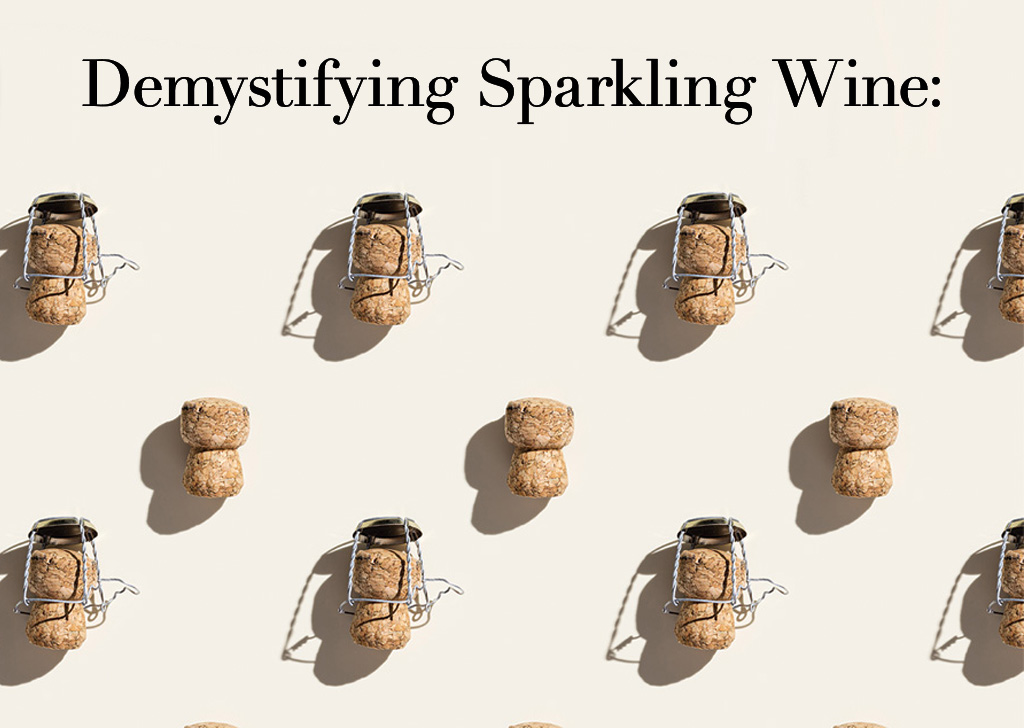Feeling a step behind on sparkling wine? Understandable if so, given the dramatic rise in popularity in recent years. According to Wine Intelligence, the United States has experienced twenty consecutive years of growth, and recently, this trend has accelerated into the double digits. Not only did the number of Americans drinking sparkling wine increase by 30% between 2019 and 2022, but they are also drinking it more often. The number of sparkling wine buyers monthly rose from 56% to 72% during the same period. In a development many experts attribute to pandemic lockdowns, fewer Americans associate sparkling wine with formal events. Sparkling wine is now seen as able to add a touch of sophistication to virtually any occasion.
Understanding the different types of sparkling wines can empower you to offer a diverse and well-performing selection to your customers as they enjoy the evolution of this exciting beverage. In this guide, we will explore the most popular types of sparkling wine, their characteristics, and food pairing suggestions that might inspire your displays and shopping experiences.
Champagne
Champagne, synonymous with elegance and celebration, originated in the Champagne region in France. It undergoes a second fermentation process in the bottle, creating its distinctive effervescence. Champagne is known for its crisp acidity, complex flavors, and fine bubbles. The most popular style of Champagne is “brut,” which is extremely dry (i.e., less sweet). Champagne pairs exceptionally well with steak, oysters, caviar, and delicate seafood dishes.
Prosecco
Originating from Italy’s Veneto region, prosecco has gained immense popularity in recent years. Made from the prosecco (also known as “glera”) grape, it is almost always produced as a sparkling or semi-sparkling wine via the Charmat method, where the secondary fermentation occurs in large tanks instead of in the bottle. Prosecco is characterized by its light, fruity flavors, floral aromas, and a more affordable price point compared to Champagne. With its acidity and low alcohol content, prosecco pairs well with a wide array of foods, from rich and spicy Indian or Thai to fried foods to lighter cheeses.
- Try: Ruffino Prosecco
Cava
Cava is Spain’s most popular style of sparkling wine. Produced primarily in the Penedès region, cava often utilizes traditional grape varieties like macabeo, parellada, and xarel-lo. It is created using a traditional fermentation process like Champagne, but even though cava is frequently described as offering a similar experience to Champagne, it’s generally much less expensive. Less sweet than prosecco, cava strikes a great balance between fruitiness and acidity, with a range of styles from crisp and dry to sweeter options. It pairs excellently with tapas, grilled seafood, and creamy cheeses.
Moscato d’Asti
A relative of moscato, a still wine, this DOCG – Denominazione di Origine Controllata e Garantita (the highest quality classification for Italian wines)
sparkling white wine is made from the moscato bianco grape. Asti is produced mainly in the northern Italy province of Asti, as well as smaller nearby regions in the provinces of Alessandria and Cuneo. The wine is sweet and low in alcohol and is considered a dessert wine.
A number of other sparkling wines are extremely popular around the world and likely to be discovered by US customers soon.
Crémant
Crémant refers to French sparkling wines produced with similar techniques to Champagne but outside the Champagne region. Regions like Alsace, Burgundy, and Loire Valley craft crémant using various grape varieties such as chardonnay, pinot noir, and chenin blanc. These wines tend to be more affordable than Champagne while still maintaining high quality and elegance, and they are often described by experts as some of the most underrated sparkling wines. Crémant pairs well with fried foods, soft cheeses, and salty appetizers.
Franciacorta
Produced in lower volumes and at a higher price point than some other Italian sparkling wines, franciacorta is not yet as well-known to Americans, but that is likely to change, given the wine’s premium quality. Made in the Lombardy region using a traditional method similar to Champagne, Franciacorta has nuanced flavor notes of citrus and green apple, with tiny, delicate bubbles and a crisp, refreshing acidity. As a fruity sparkling wine, Franciacorta pairs well with soft ripened cheeses like brie, dried fruits like apricots, and salted nuts.
Conclusion
By familiarizing yourself with the different types of sparkling wines, you can curate an impressive selection that caters to diverse tastes and budgets, as well as provides the thrill of discovery as your customers explore this developing trend. Consider enhancing displays with clear labeling and descriptions so customers can make informed choices. Educate your staff on the characteristics and food pairings of each sparkling wine type, enabling them to offer valuable recommendations to customers. It’s time to elevate your customers’ favorite occasions and add a touch of sparkle to their lives!
